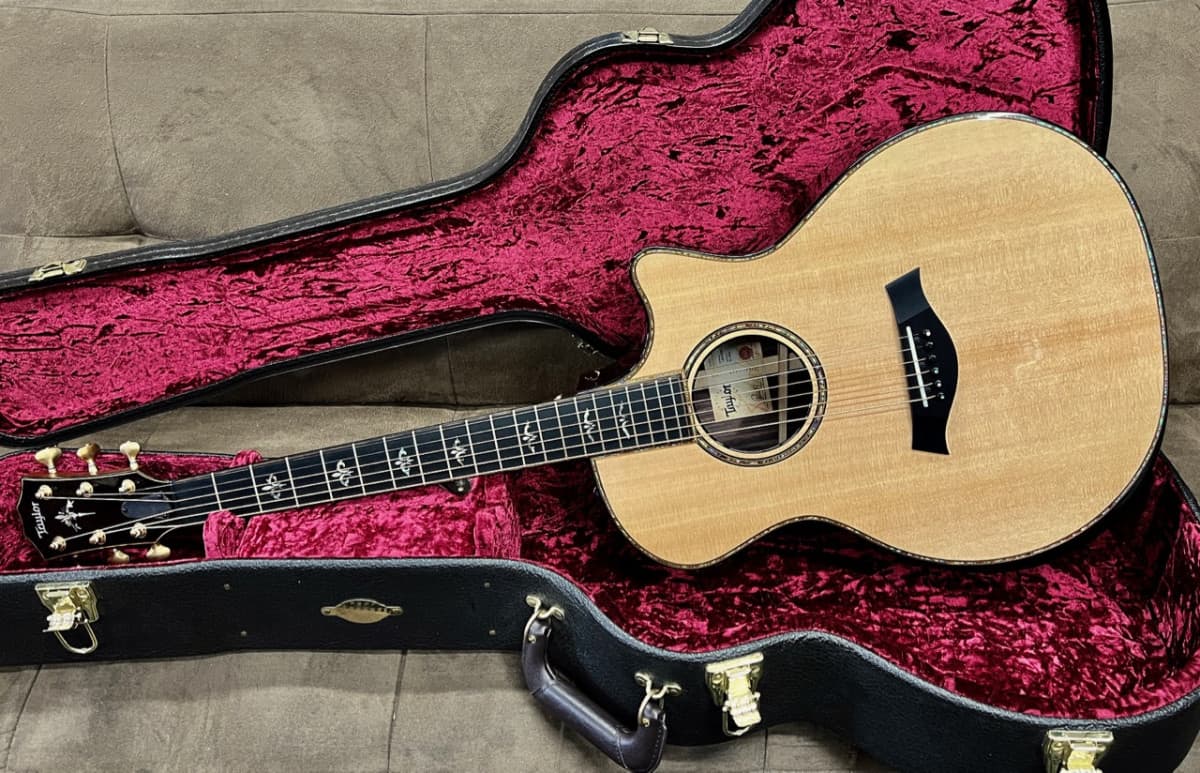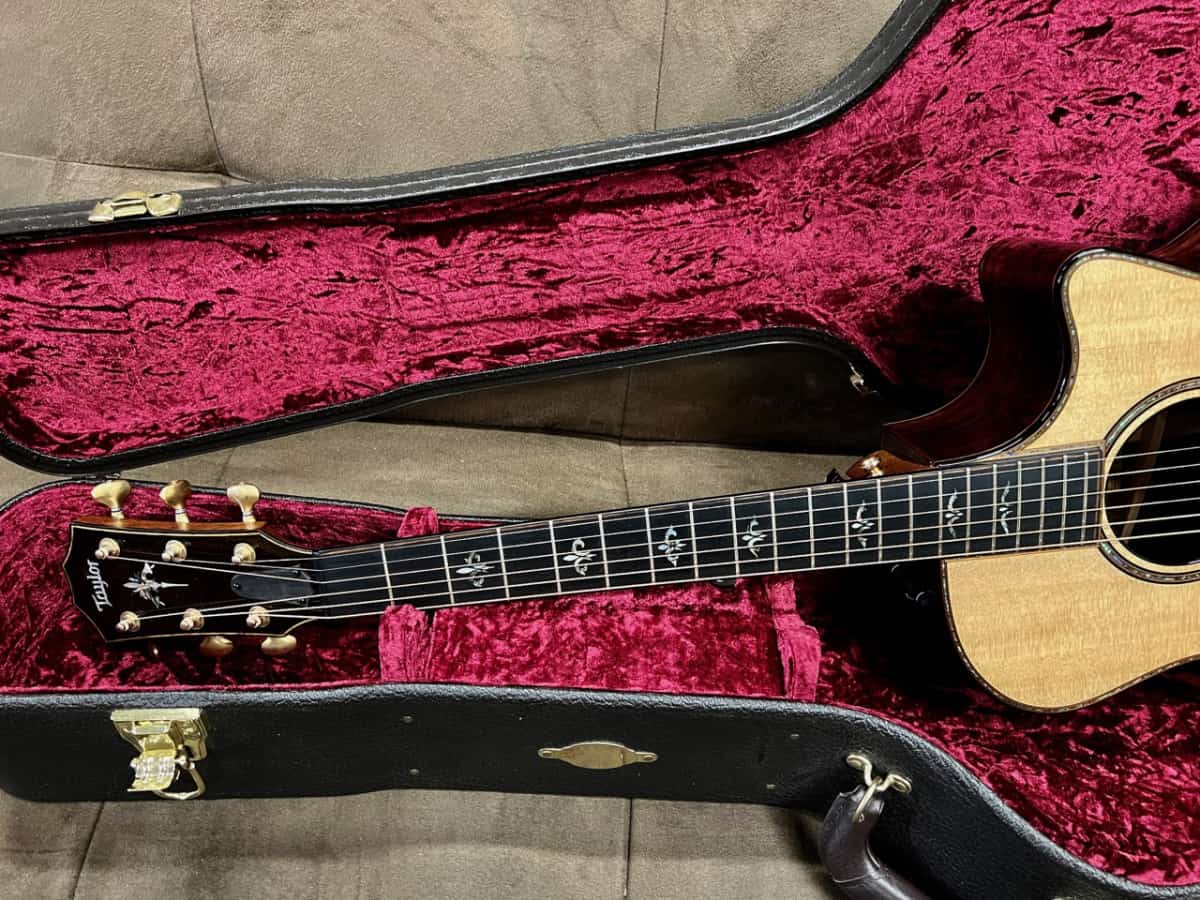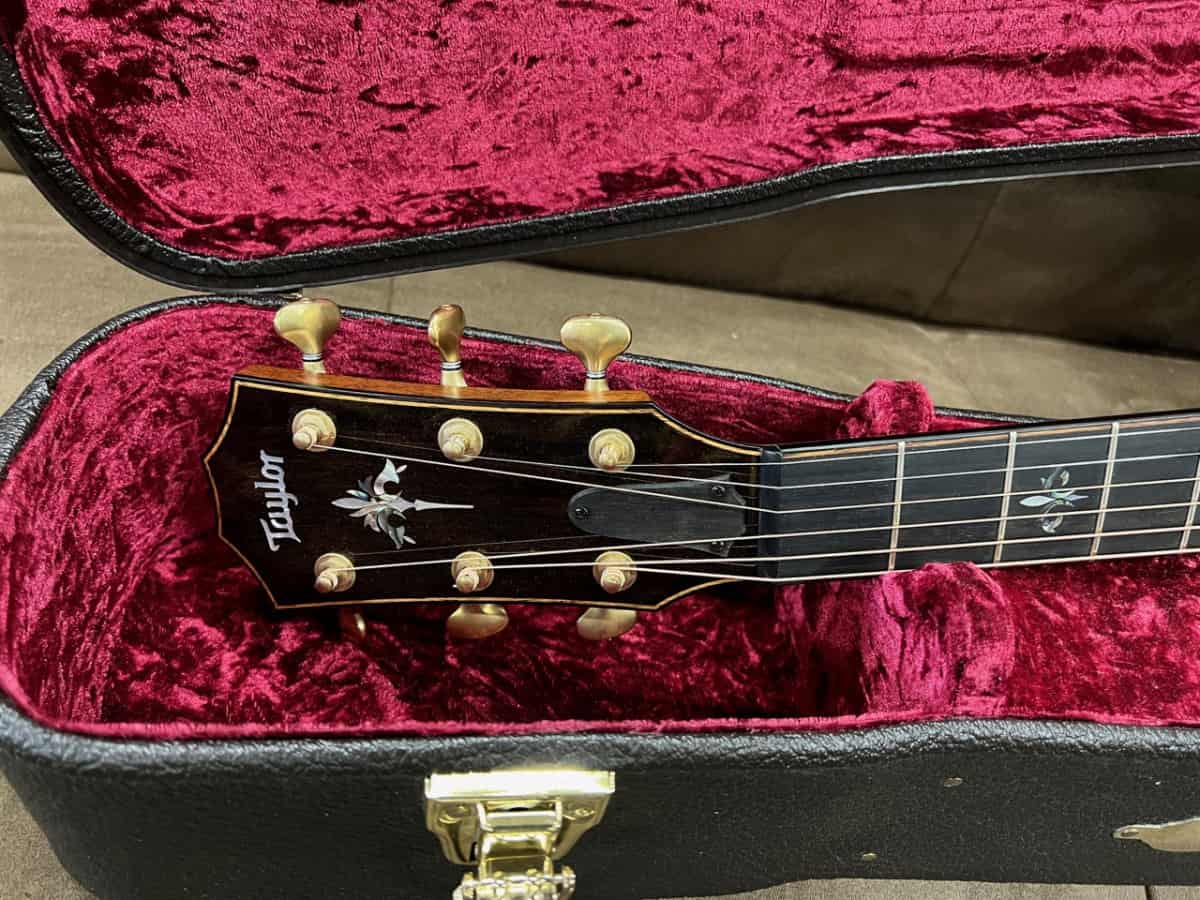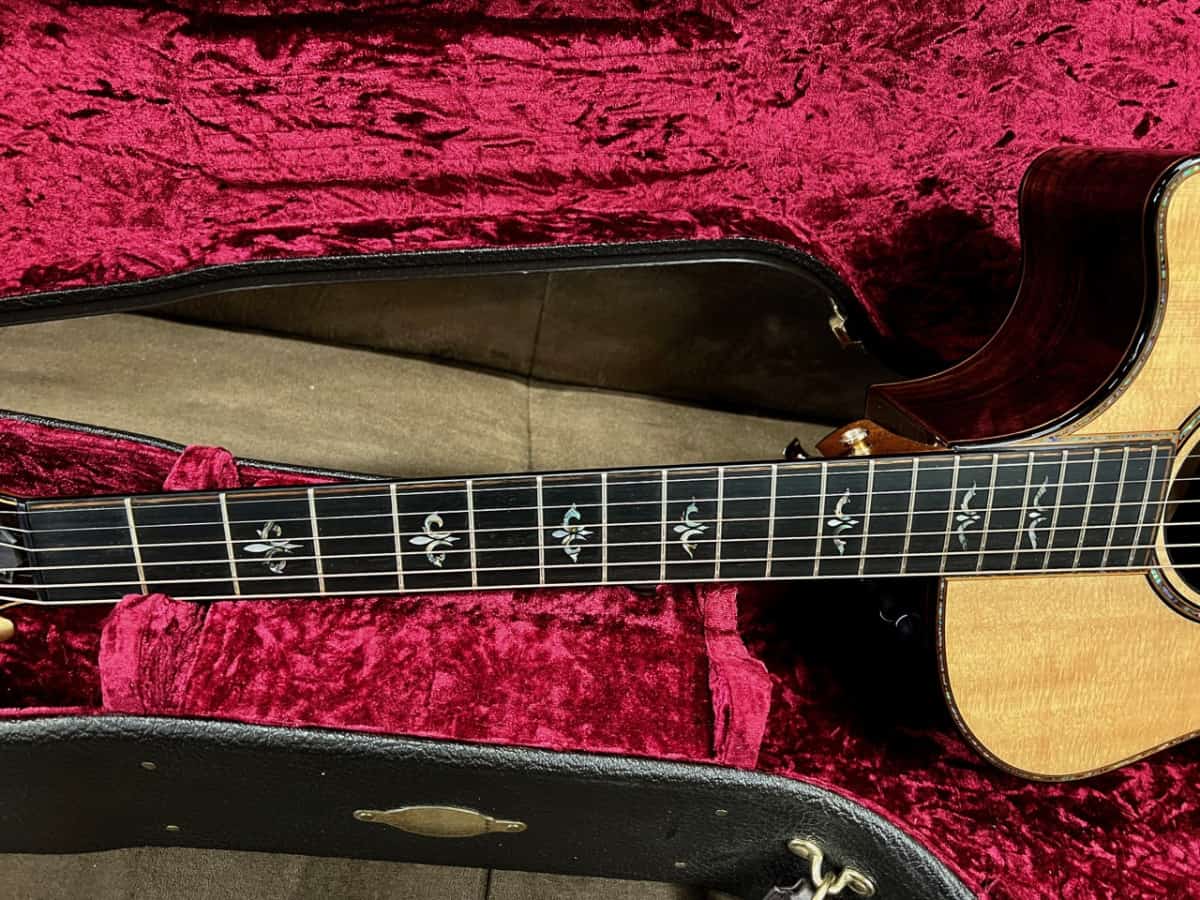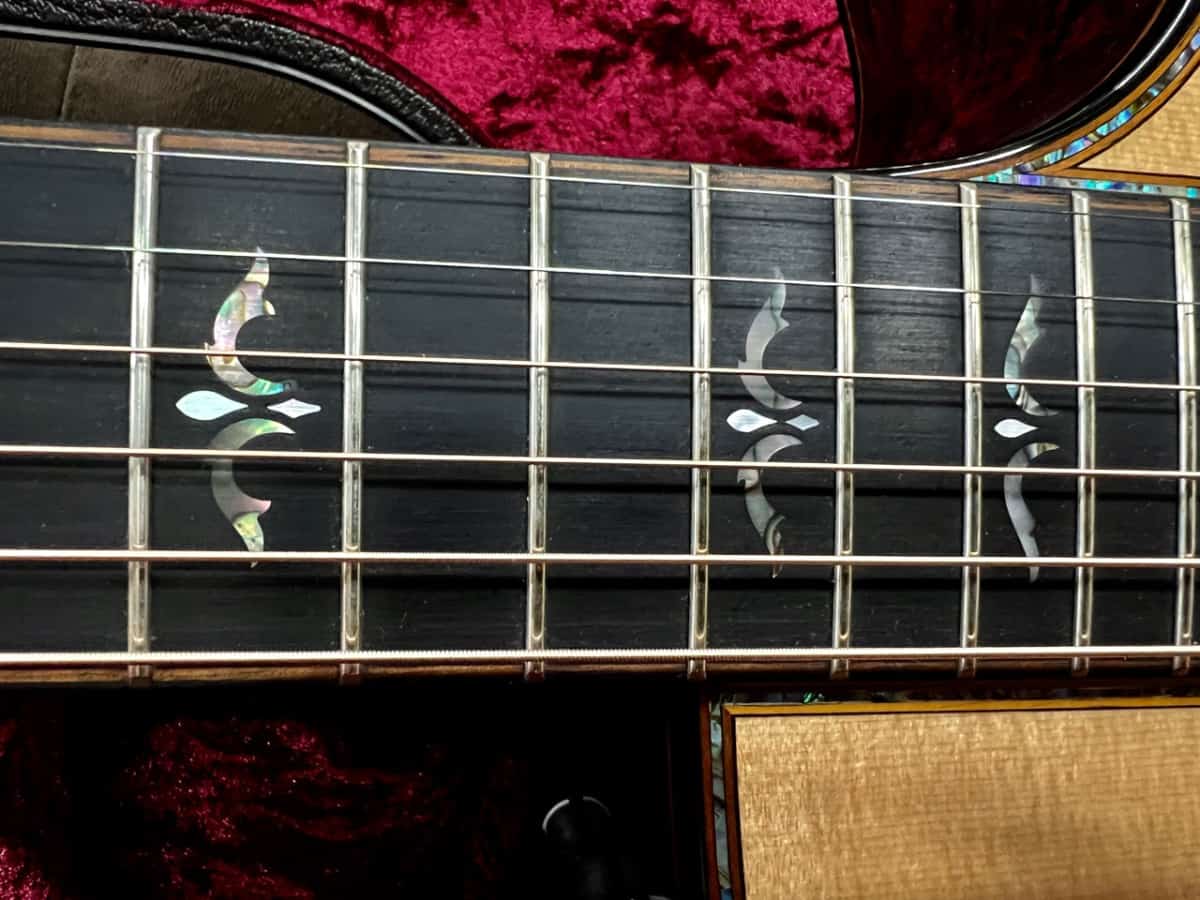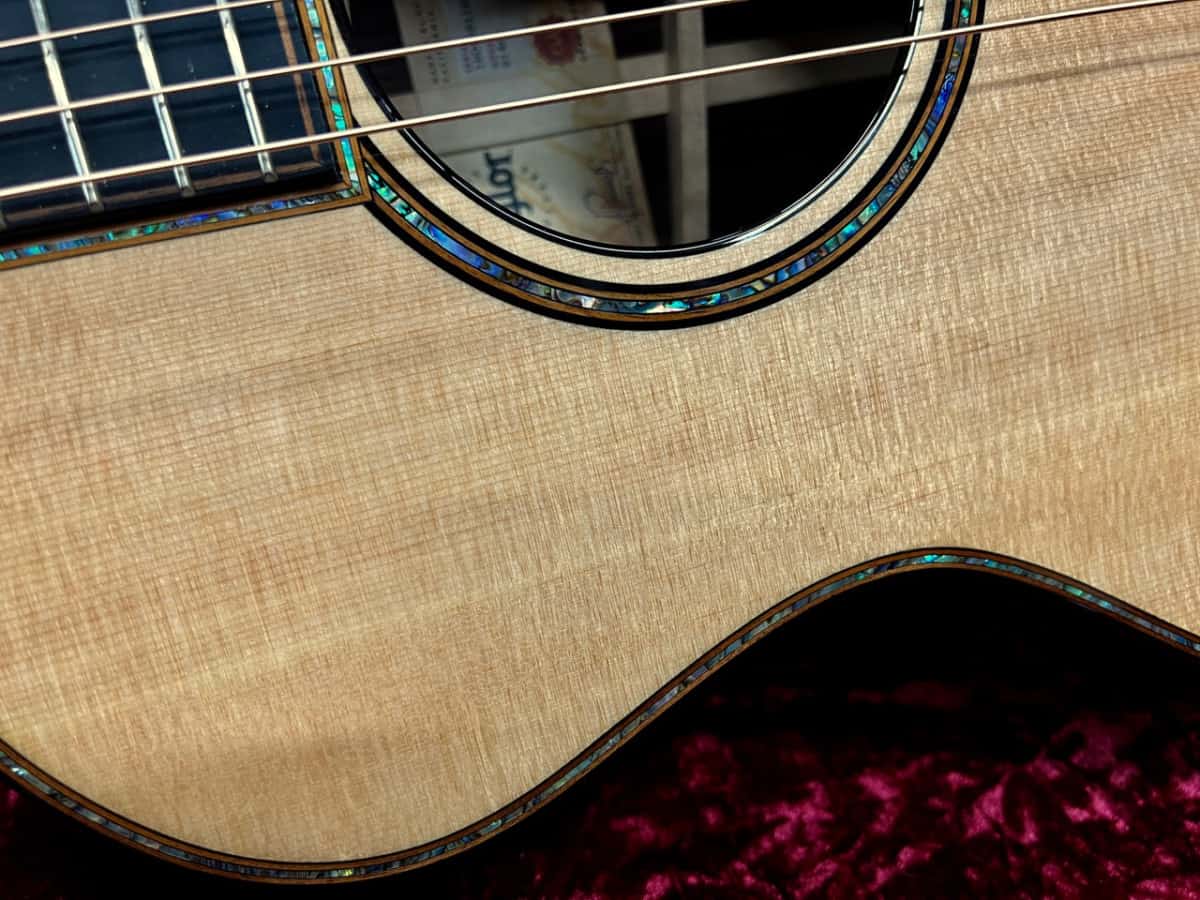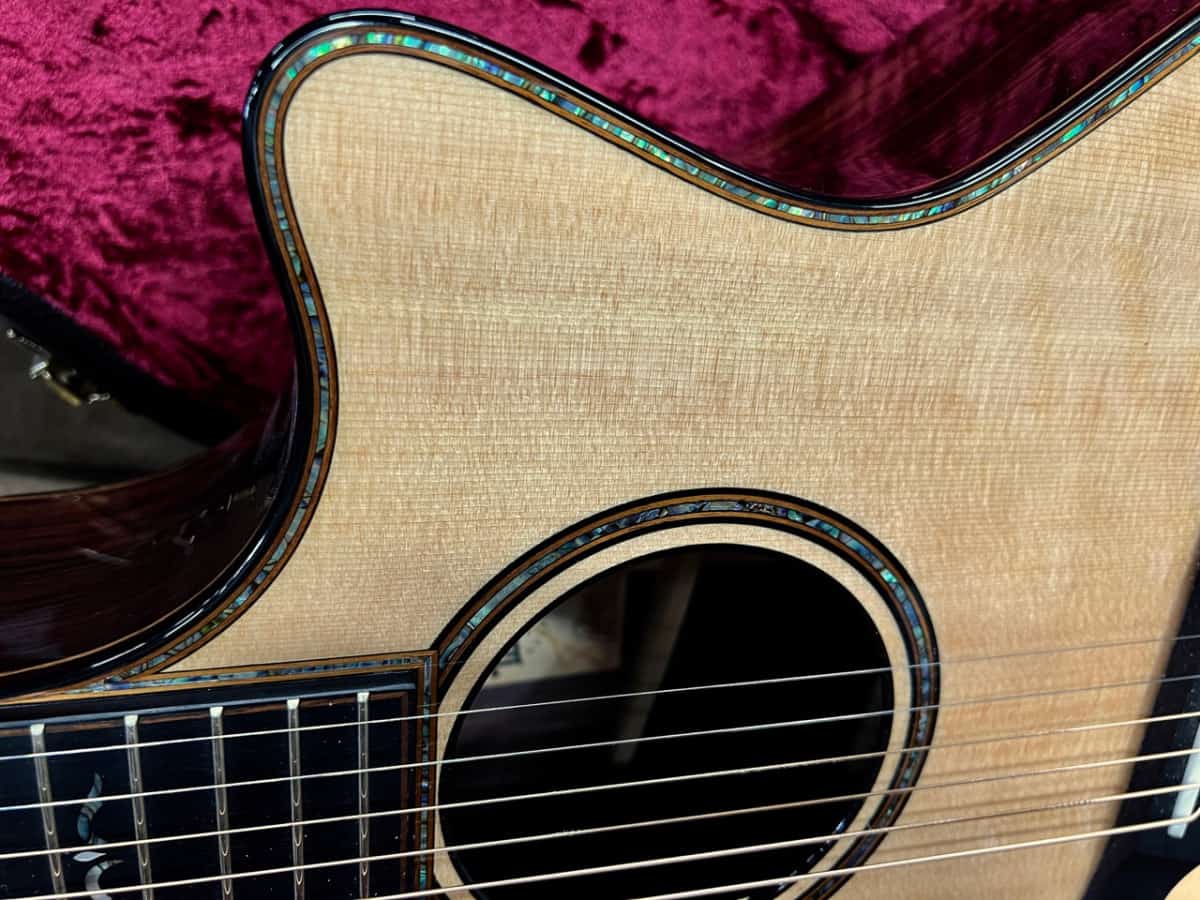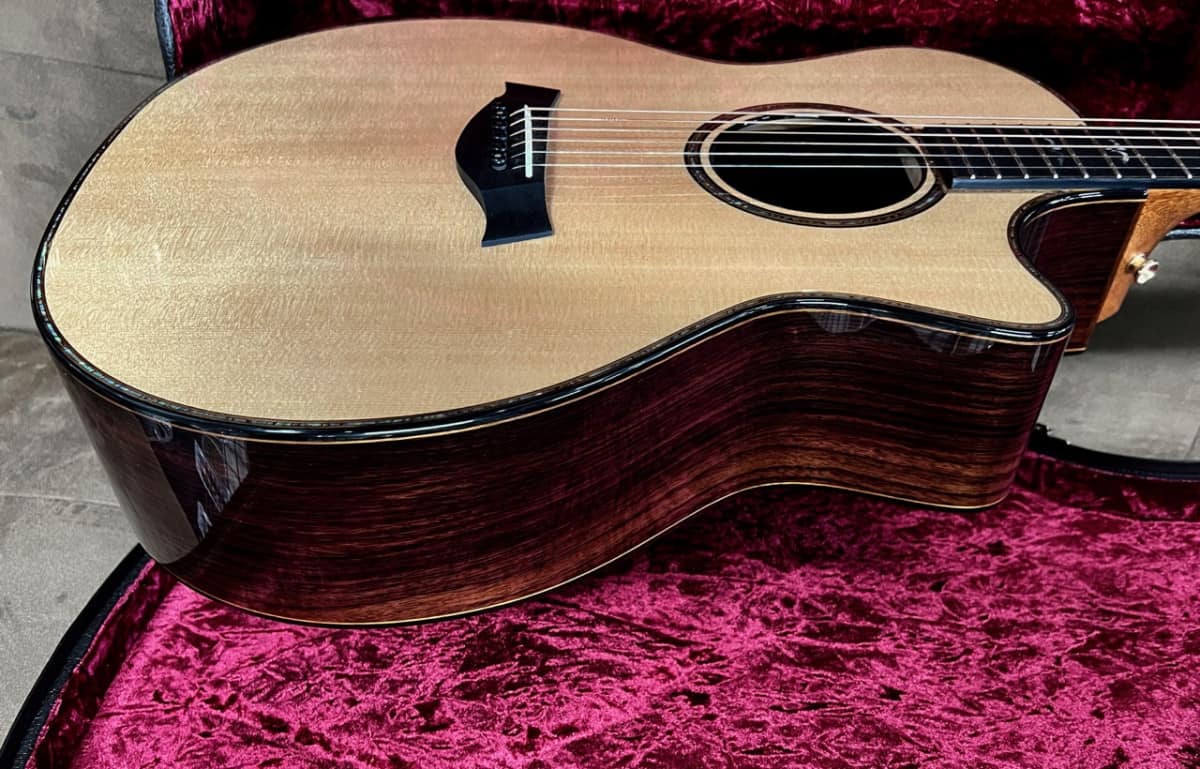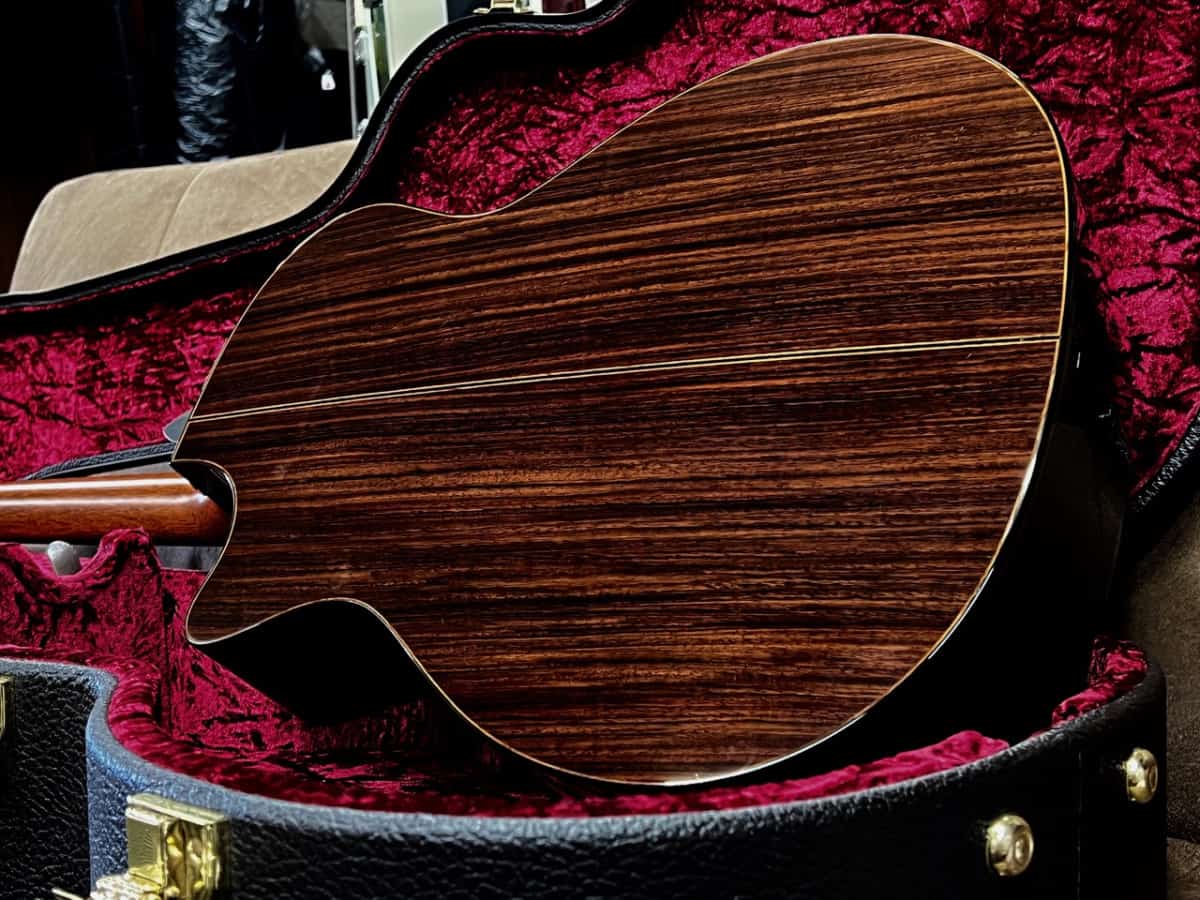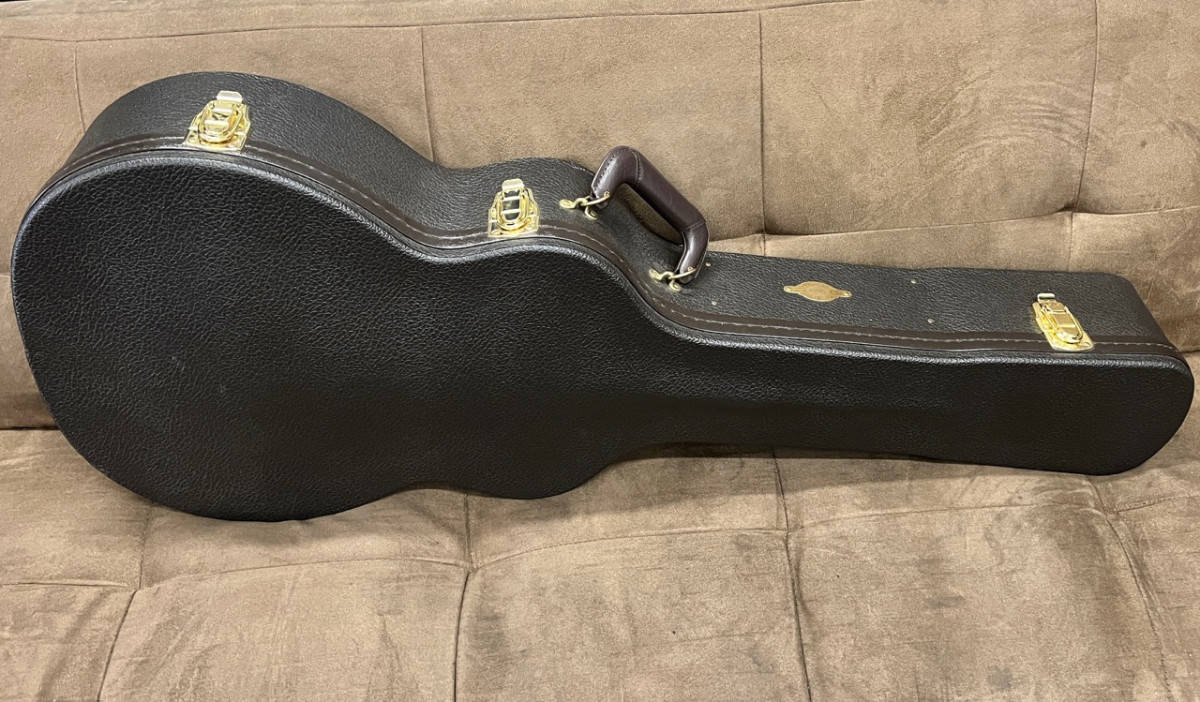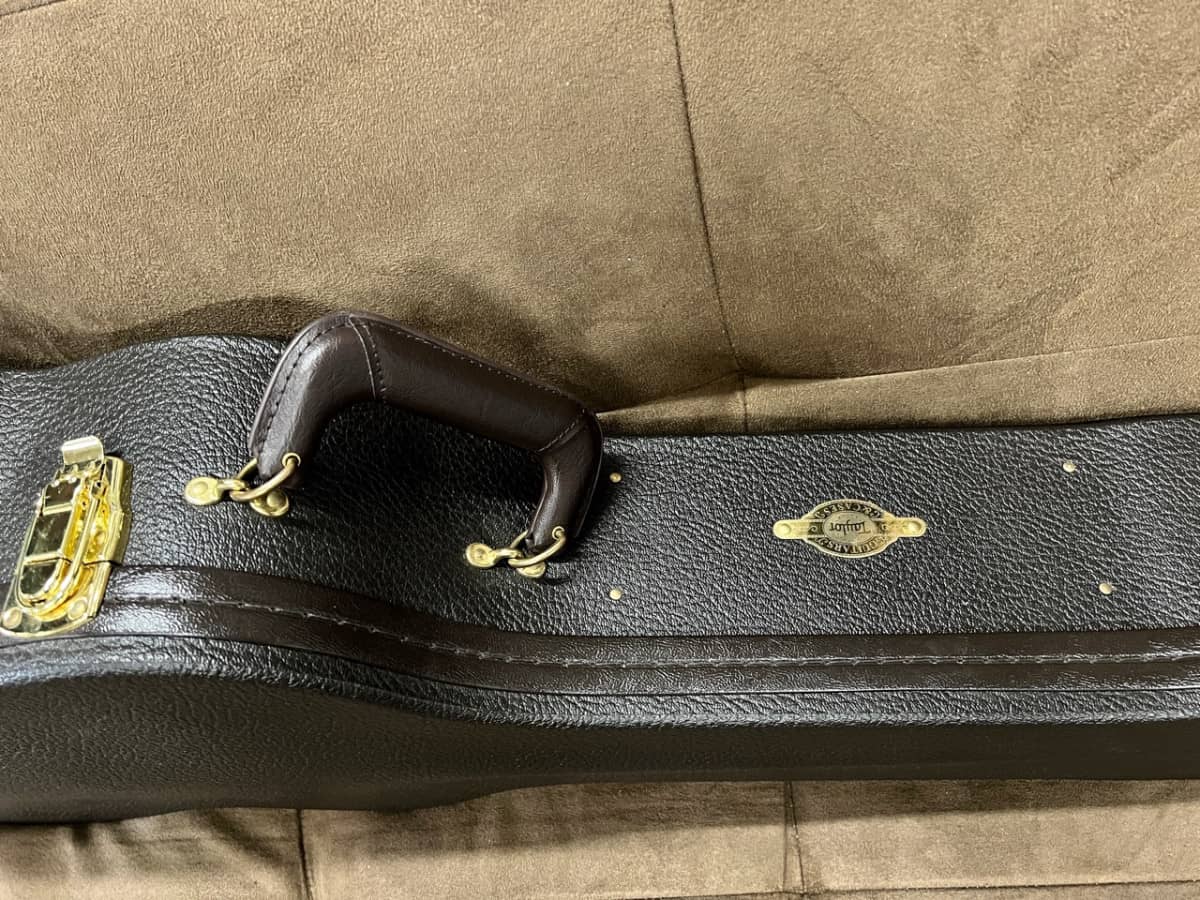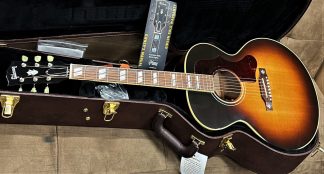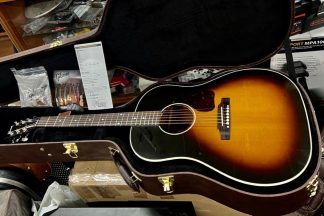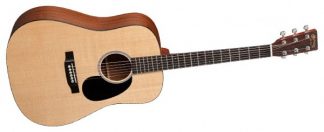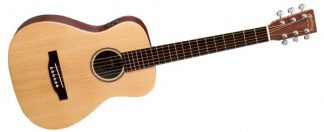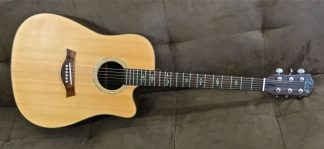Description
Taylor 914ce 2019 V Class Auditorium
Rosewood / Spruce
Want to trade? layby? swap? or make an offer?
Please talk with us 02 6696 3530
Tony Elder / Steve Jackson
Black Dot Music
Est 1985
Sold – Al
Just traded on a Gibson Custom Shop Les Paul. In very clean condition with striking tone and playability.
914ce
The pinnacle of Taylor’s rosewood/spruce offerings is the 914ce, a Grand Auditorium acoustic-electric whose sonic complexity and richness are matched by its beautiful presentation and detailing. All-solid rosewood back and sides with a Sitka spruce top serve up a stunning balance of warmth and clarity, featuring low-end presence, chime-like trebles and a slightly scooped midrange that opens up space for vocals and other instruments. V-Class bracing helps push out more volume and sustain, and the built-in ebony armrest offers a more comfortable feel for your strumming/picking arm. Refined appointments include ebony binding, an Ascension inlay scheme in paua and pearl, and a paua rosette. It ships with ES2 electronics and a hardshell case.
Highlights
-
Scale Length25-1/2″
-
BracingV-Class Bracing
-
PickguardNone
-
TunersGotoh
-
Strings D’Addario XS Coated Phosphor Bronze Light (.012 – .053)
-
Body Width16″
-
Nut & SaddleBlack Graphite, Micarta saddle
-
Truss Rod CoverWest African Crelicam Ebony
-
Number of Frets20
-
CaseTaylor Deluxe Hardshell Brown
-
Body Length20″
-
Body Depth4 5/8″
Grand Auditorium
Taylor’s signature shape embodies the ultimate all-purpose acoustic.
Overview: Taylor’s signature shape embodies the ultimate all-purpose acoustic.
- An original Bob Taylor design introduced in 1994
- Full in the lower register, present in the midrange, and sparkling on the treble strings
- Our most popular shape and a good place to begin your search
Our most popular and versatile body shape, the mid-size Grand Auditorium arrived in 1994 bearing refined proportions that fell between a Dreadnought and Grand Concert. While the bigger Dreadnought was traditionally considered a flatpicker’s guitar and the smaller Grand Concert catered to fingerstylists, the GA was designed to deliver on both fronts. The shape produced an original acoustic voice that was big enough to handle medium-strength picking and strumming, yet with impressive balance across the tonal spectrum, especially in the midrange, producing clear, well-defined notes that suited both strumming and fingerstyle playing. The GA’s overall presence tracks well with other instruments both in a studio mix and on stage, and singer-songwriters have embraced its utility both for composing and traveling with one guitar. Many people want a single guitar that can cover a variety of styles, which is why the GA continues to be our bestselling shape. If you want a great all-purpose guitar, the multi-dimensional GA won’t let you down.
Specifications: Body Length: 20″ / Body Width: 16″ / Body Depth: 4 5/8″
Indian Rosewood
Overview: Indian rosewood’s sweeping frequency range at both ends of the tonal spectrum has made it one of the most popular and musically rich tonewoods. Its deep lows can assert a throaty growl, while bright, sparkling treble notes ring out with bell-like, high-fidelity clarity.
Origin: India
Sound: One of the most popular and traditional guitar woods of all time, rosewood takes the basic sonic thumbprint of mahogany (which has a strong midrange) and expands it in both directions. Rosewood sounds deeper in the low end and brighter on the top end (one might describe the treble notes as zesty, sparkly or sizzly, with more articulation). If you look at its frequency range visually, rosewood would appear to be more scooped in the middle, yielding less midrange bloom than mahogany. Like mahogany, rosewood’s vintage heritage has helped firmly establish its acoustic legacy. It’s a great sound in part because we know that sound. In some music circles in which preserving the traditional sound helps bring a sense of authenticity to the music — certain strains of Americana, for example — rosewood has an iconic status. Also like mahogany, rosewood is a versatile tonewood, which has contributed to its popularity. One can fingerpick it, strum it and flatpick it. It’s very consistent, so players can usually rely on it to deliver.
Goes Well With: Most applications. If you like a guitar with fuller low end and brighter treble (bluegrassers, for instance), rosewood will do the trick. Its high-end sizzle and clear articulation will benefit players with “dark hands”. If you’re looking for a traditional acoustic sound, a rosewood Dreadnought or Grand Auditorium is right up your alley.
Sitka Spruce
The soundboard choice for most guitars, Sitka spruce produces a broad dynamic range and accommodates a versatile range of playing styles.
Overview: As a guitar soundboard, or top, Sitka spruce is the tonewood standard of the modern era. It’s used on 85-90 percent of the guitars that Taylor makes. Its combination of strength and elasticity translates into a broad dynamic range, yielding crisp articulation and allowing for everything from aggressive strumming and flatpicking to fingerpicking. Sitka spruce is Bob Taylor’s personal favorite for an all-around great guitar.
Origin: Canada
Goes Well With: All styles of guitars and players.
Expression System® 2
The Expression System® 2 captures more of a guitar’s dynamic properties using a breakthrough behind-the-saddle design.
The Taylor Expression System® 2 (ES2) is a revolutionary pickup design that delivers the latest in Taylor’s ongoing innovation in acoustic guitar amplification. The heart of the Expression System 2 is Taylor’s patented behind-the-saddle pickup, which features three uniquely positioned and individually calibrated pickup sensors. The location of the sensors enables a more dynamic range of acoustic sound to be captured than ever before. Together with Taylor’s custom-designed “professional audio”-grade preamp, this system produces exceptional amplified tone and responsiveness. On stage through a PA, plugged into your favorite acoustic amplifier, or direct into recording software, the Expression System 2 faithfully conveys the voice of your Taylor guitar.
Behind the ES2 Design: Rethinking the Piezo Pickup
For decades, piezo-electric transducers have been positioned under the saddle of a guitar based on the long-held belief that the string and top vibration cause the saddle to “bounce” up and down. But Taylor’s electronics team, led by developer David Hosler, discovered that the vertical movement is actually heavily restricted, and that the saddle gets “locked down” due to the string tension’s downward pressure. That’s why a traditional under-saddle pickup with piezo-electric crystals often responds with a sound often characterized as thin, brittle, brash or synthetic, especially with more aggressive playing.
The saddle’s natural range of movement as the guitar is being played is actually back and forth like a pendulum. That revelation led Taylor’s design team to relocate the crystals from under the saddle to behind it. The new positioning enables the crystals to respond more naturally to the guitar’s energy as it is transferred through the saddle. Three pickup sensors are installed behind the saddle, through the bridge, with three tiny Allen screws that calibrate the position of the sensors in relation to the saddle.
Like the original Expression System, the ES2 features the same volume and tone control knobs. This makes it plug-and-play friendly both for artists and live sound mixers.
Cutaways
Our elegant cutaways add to a guitar’s shapeliness and invite you up the fretboard to broaden your playing range.
A cutaway is the “scooped” indentation in a guitar’s upper, treble-side bout (near the neck), which allows access to the upper frets. Many electric players accustomed to having a cutaway gravitate toward the familiar feel of a cutaway acoustic guitar, especially if they play lead lines or chords in the upper register. Others simply like the extra musical range a cutaway allows. Cutaways are often favored as much for their aesthetic appeal as for their function. One common question is whether a cutaway diminishes the tonal output of an acoustic guitar in a significant way. The truth is not by much, because that particular portion of the soundboard doesn’t drive a lot of the tonal output. The taper of a guitar’s waist will actually have more of an impact on tone. Our opinion is that the access you gain to the upper register notes from a cutaway far exceeds the minimal reduction in tonal output. We offer two main cutaway styles: a softer Venetian (with several variations) and a sharper Florentine.
The Venetian cutaway is known for its soft, round lines. The sloping peak of the cutaway will vary depending on the shape of the body. The Grand Concert and Grand Auditorium have a steeper slope, while the Dreadnought is a bit flatter. Our Grand Concert nylon-string models also feature a subtle, flatter slope, while our 200 Series cutaway models incorporate our flattest slope.
Bracing
Inside every Taylor guitar is a refined voicing framework that helps shape its musical personality.
Bracing is the internal architecture, featuring an arrangement of wooden struts, that strengthens the top and back of an acoustic guitar, creating a strategic balance between stiffness and flexibility. This helps translate the air movement produced by the vibrating guitar strings and soundboard into volume, sustain and other musical properties. The nuances of each bracing pattern help “voice” a guitar, working in concert with its body dimensions and tonewoods to flavor its sound.
In our ongoing drive to refine the tone of our guitars, our bracing designs have steadily evolved over time. Led by Taylor master guitar designer Andy Powers, our latest innovative bracing designs offer a rich and diverse musical palette for players to explore. Below are several types of soundboard bracing offered with our guitar line. (Note: Bracing patterns shown have been simplified to highlight the basic form.)
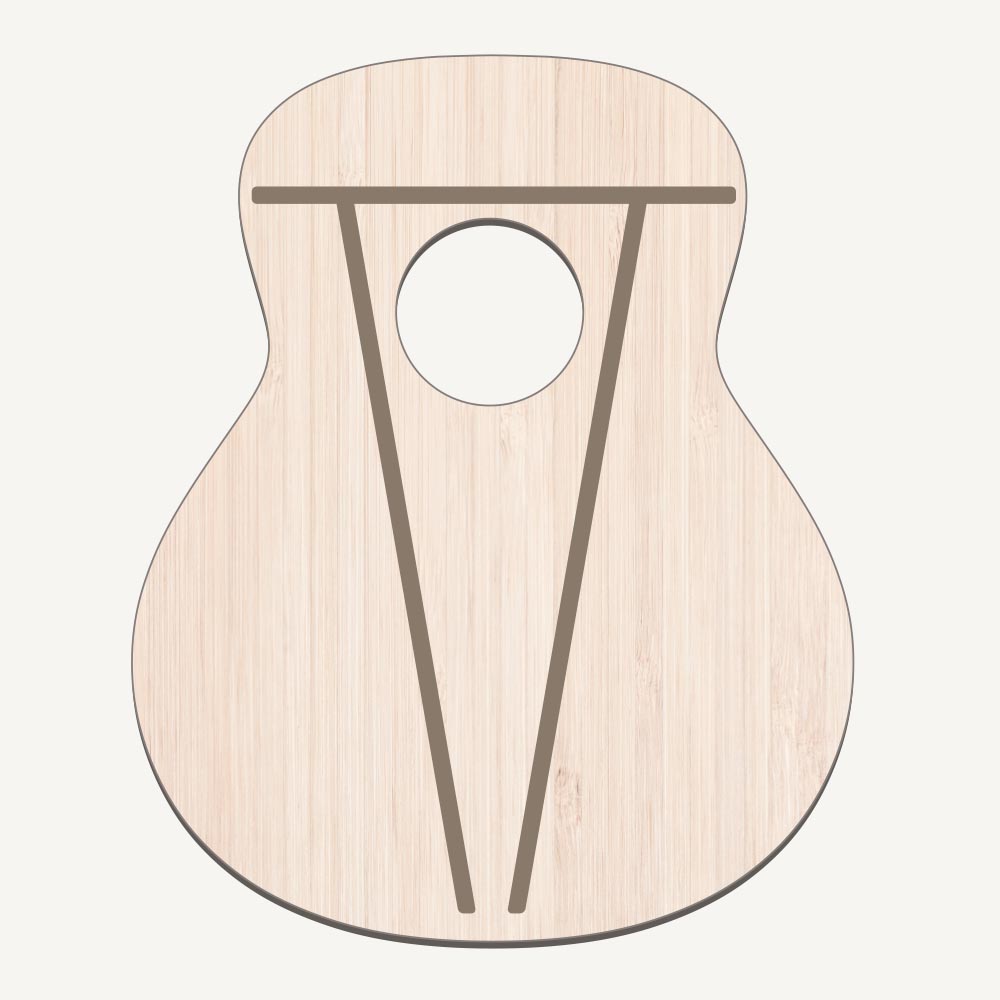
V-Class™ Bracing
Our patented V-Class bracing is a revolutionary new pattern — a new sonic engine — that marks a major shift away from traditional steel-string bracing patterns. By allowing the soundboard to flex naturally while maintaining rigidity along the center (in the direction of the strings), V-Class helps enhance the volume and sustain. It also creates a more orderly response from the soundboard. Up and down the fretboard, notes are full, true and consistent, with more harmonic agreement. It represents an entirely new design platform that can be adapted to different body styles in different ways to infuse each with a unique sonic personality.





